
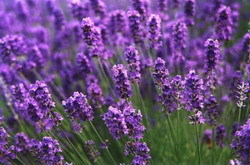
The Lavender World scenic area in Qingxin county
In January 1988, the State Council approved the cancellation of Qingyuan county and the establishment of Qingyuan city. The former Qingyuan county was divided into two county-level districts -- Qingcheng district and Qingjao district -- under the jurisdiction of Qingyuan city. In June 1992, Qingjiao district was cancelled and Qingxin county was established, while its administrative division remained unchanged and the county people’s government was in Taihe Town.
Situated in the middle of Guangdong province and the middle and lower reaches of the Beijiang River, Qingxin county serves as a transition zone between the Pearl River Delta and the mountainous area in northern Guangdong province. The county seat, Taihe Town, is 68 kilometers from Guangzhou and 40km from the new Guangzhou airport.
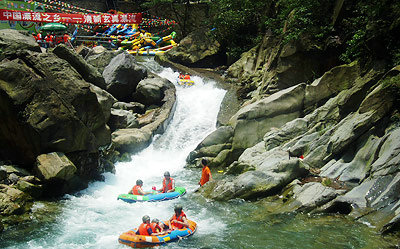 |
| Xuanzhen Gorge Rafting |
The land in the county declines southeastwards, and the landscape is very diversse. The northern part is a typical limestone mountainous area; the central part is dominated by medium and low mountains; the southeastern part is dominated by hills, and the southwestern part is dominated by plains. The highest peak is Qixinggang Mountain 1,144m above the sea level.
The county has profuse rainfall and numerous rivers. There are 12 main and branching waterways with a catchment area of over 100 square kilometers, mainly including the Beijiang River, the Binjiang River and their tributaries: the Bijiang River, Qinhuang River and Weijing River. They all belong to the Pearl River Basin and Beijiang River Water System. The water resources are ample. The reserves of the hydropower resources in the county are 191,500 kilowatts, mainly distributed in the Binjiang River Basin (77 percent), while the remaining 23 percent is distributed in the Gaotian, Wendong and Bijia rivers in the southeast and the Weijing River in the southwest. There is about 100,000kW worth of exploitable water resources. By December 2007, the total installed capacity of the county’s hydropower stations in the was 92,000kW.
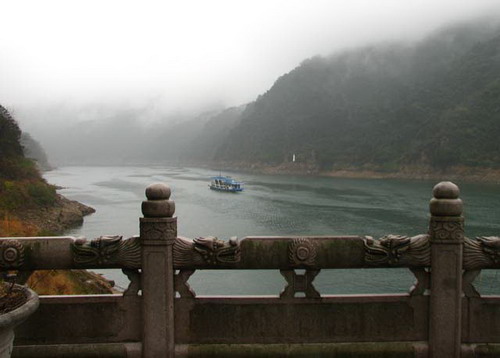 |
| Feilai Gorge |
The territory of the county is near the Tropic of Cancer and belongs to the southern subtropical monsoon climate zone. It is neither cold in winter nor hot in summer. The climate is moderate. Annual average air temperature is 20℃-22℃. The frost-free period is more than 330 days. The precipitation is plenty. It is one of the three areas with the largest precipitation in Guangdong. Its perennial average precipitation is 2,139 milimeters. The perennial average evaporation from the water surface has little change and fluctuates in the range of 1,200-1,300mm and declines gradually from south to north. The perennial average drought index is 0.6-0.7. The annual precipitation is greater than annual evaporation. Generally, only about 30 percent of annual precipitation is consumed through evaporation of surface water, evaporation of soil and transpiration of plants, and about 70 percent of annual precipitation may form runoff.
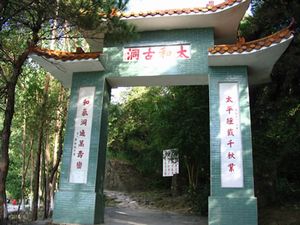 |
| Taihe Ancient Cave scenic area |
The county is more than 100km long in the longitudinal direction and more than 70km wide in the latitudinal direction, with a total area of 2,725 square kilometers. It administers 9 towns, Bijia Forest Farm, 207 village committees, 27 neighborhood committees and 3,704 villager groups. By the end of 2007, the county had a total population of 735,000 people, including 380,000 men and 355,000 women, and the population density was 269.8 people per square kilometer. In the county, there are more than 300 surnames, including more than 20 surnames with more than 10,000 people and more than 30 surnames with more than 5,000 people. More than 80,000 people have a surname of Chen, which is the county’s most popular. Most residents speak Qingyuan dialect, which is similar to Cantonese. A small number of the local people speak Hakka and He dialect, and most of them can speak Qingyuan dialect fluently.
The traffic network is advanced. Beijing-Guangzhou Railway, No.107 national highway, Qinglian Grade-1 Highway, Yinying Highway, Qingsi Highway and Qingfo Highway are interconnected. By the end of 2007, the county had roughly 2,170km of highway traffic mileage and 79.51 km/100km2 of highway density. The navigation channel on the Beijiang River is connected to the Pearl River Water System. Cargo ships in Qingxin can directly reach Guangzhou, Hong Kong and Macao. Post and telecom have realized rural and urban integration and are fast and convenient. Program-controlled telephones are directly connectible to more than 140 countries and regions. Locals can access a variety of networks, including mobile communication, radio paging, facsimile, Gnet, broadband and Internet.. The power supply network in the county is sound, and the power supply is sufficient.
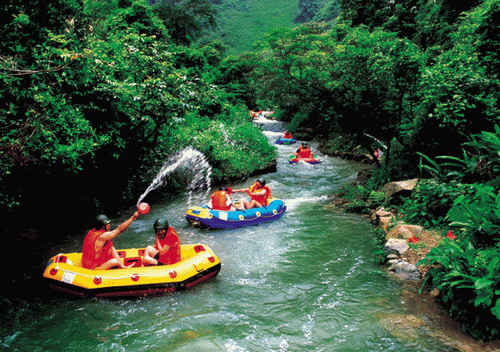 |
|
The forest is luxuriant, the air is fresh, the water is clear and fast at Qingxin Gaotian Bishuitan Rafting.
|
In the county, the soil is fertile and the natural resources are abundant. In terms of agricultural resources, the county now has 22,052 hectares of arable land, including 17,628ha of paddy fields. The area of the land for forestry is 182,972.3ha; the area with forest is 140,634.7ha, and the volume of growing stock is 5,826,798 cubic meters. The agricultural and sideline products include rice, peanut, bamboo root, fruit, tea, vegetables, Qingyuan partridge chicken and Wuzong goose. Qingyuan partridge chicken, Luokeng bamboo root, Qingyuan Wuzong goose and Bijia tea are world famous traditional local specialties. The county has more than two kinds of proven mineral resources, mainly gold, rare earth, kaolin, hot mineral spring, limestone and quartz. The reserves of limestone are about 700 million tons, and the limestone is suitable to produce cement and the average grade is of CaO≥48 percent; the hot mineral spring has ample reserves, high water quality and high development and utilization value. According to geological data, the minerals with proven grade-D reserves in Qingxin include: sandstone with 5.1 million m3, granite in buildings with 3.2 million m3, plagioclase granite with 1.4 million m3, limestone for cement production with 7 million m3, limestone for lime production with 10.9 million m3, quartz with 2.45 million m3, ceramic clay with 9.1 million m3, clay for brick and tile production with 0.92 million m3, lead zinc ore with 35,000 tons, and geothermal water with 0.99 million m3/year.
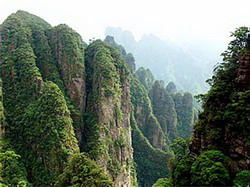
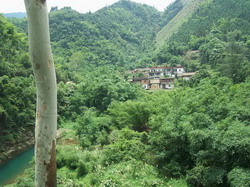
Bijia Mountain
Qingxin county is a strong tourist county in China and Guangdong. The natural scenery is beautiful. The mountains and waters are picturesque. The tourism resources are abundant, and there are more than 40 featured sites with tourism resources, such as: natural landscape, historical and cultural heritage, rivers and lakes, karst cave, folk customs, and the characteristic hot spring. Qingxin Hot Mineral Spring Resort, Xuanzhen Ancient Cave Ecotourism and Holiday Zone and Feilaixia Hydro-Junction Scenic Spot are national AAAA scenic spots. Taihe Ancient Cave Scenic Spot is a national AAA scenic spot. Other tourist attractions include the World of Lavender, Bijia Mountain Resort, Bishuitan Rafting, “Small Three Gorges” Beijiang River, Feilai Island Resort, Jinlong Cave, Mingxia Ancient Cave, Gaotian Tianzi Mountain Waterfall Scenic Spot, Qingyuan Taoyuan Ecotourism Zone, Bishazhou Scenic Spot, Xinhua Emu Cultural Park, Ancient Village Tourist Area, Qingxin Mingjiang Sports Club, Xisha Island, Five-star Rafting Resort, Gulong Gorge Rafting Resort and Qingyuan Idyllic Ecotourism Resort.